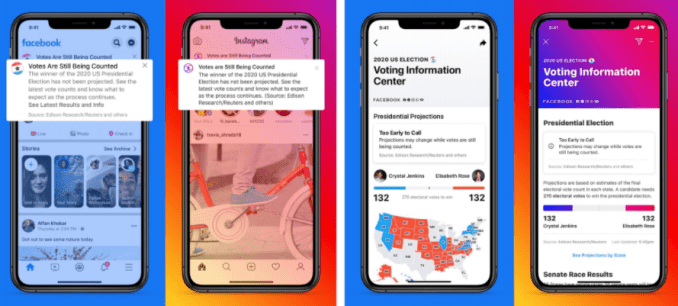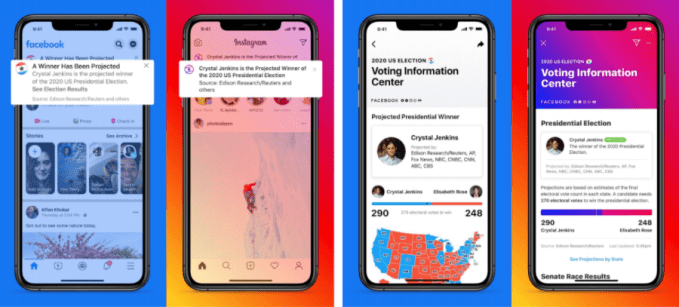News: Tech for Campaigns, created to get Democrats elected, on the parties’ biggest differences
Yesterday, a 450-page “investigation on competition in digital markets” was published by the House based on 16 months of evidence gathering, including interviews with employees and past employees and others with first-hand knowledge of the inner workings of Facebook, Google, Amazon and Apple. The picture it paints is of companies that have abused their power
Yesterday, a 450-page “investigation on competition in digital markets” was published by the House based on 16 months of evidence gathering, including interviews with employees and past employees and others with first-hand knowledge of the inner workings of Facebook, Google, Amazon and Apple.
The picture it paints is of companies that have abused their power to enrich themselves in ways previously known and unknown based on evidence collected directly from their current and former employees, as well as others with first-hand knowledge of the company’s internal workings. But House Democrats and Republicans disagree on some of the proposed remedies.
It probably doesn’t surprise Jessica Alter, the cofounder of Tech for Campaigns, an organization that was once described as a Democratic Geek Squad owing to its mission to match volunteers from the tech world — engineers, data scientists, product managers, marketing pros — with Democratic campaigns in need of a winning digital strategy.
Alter, who says Tech for Campaigns’s volunteer network now numbers more than 14,000, talked with us late last week about just how different the political parties are fundamentally, likening the Republican National Committee to a “conglomerate,” and the Democrats’s approach as far more decentralized — often to the latter’s disadvantage. Our conversation (which you can hear here) has been edited lightly for length and clarity.
TC: You were previously a tech founder. For those who don’t know you, why start this organization?
JA: I was pretty uninvolved in politics. I was just a typical techie working at early-stage companies, and I’d started one as well. But in 2017, my cofounders and I got very frustrated. I think the crucible moment for me was the first Muslim ban. And given what our skill sets are and who we know, we decided, ‘Let’s just try to look at helping on the tech and digital front.’
We had a hunch that in the 2016 election, Trump sort of wiped the floor with [the Democrats] on tech and digital, and we were more right [about that hunch] than we wanted it to be. We realized pretty quickly that the Democrats are probably 8 to 10 years behind the Republicans. That’s hard for people to believe, and usually people say, ‘But what about Obama? [His campaign] was good at tech and digital.” But all of that was thrown out. I mean that in the most literal sense.
TC: What percentage of donor dollars go to digital advertising?
JA: TV and [snail] mail still really rules the roost. In 2018, as just one example, for all of the media attention that digital advertising gets, only three to five cents went to digital for every donor dollar that was given. Most of the rest went to TV and mail.
On the tech tools and data side, we’re also far behind. Part of the problem is that there really isn’t an organization whose main thrust is to focus on tech and digital. It’s a part of every organization but it’s siloed, and no one really focuses on it, and no one organization is permanently focused on it. That’s the hole that [we’re] filling, and the way that we do that is through our full time team of. about two dozen people and our now more than 14,000 tech and digital volunteers.
TC: Are all of these volunteers finding you? And when they do offer to help, do they have a campaign in mind or do you assign them to whomever needs the help most?
JA: It’s sort of a double-opt-in system that we’ve built, so you sign up, you tell us your hometown, in addition to where you live now and we will try to match on affinity. But we first match on skill set. So we talked to all the campaign and we develop projects with them, and we know if it’s an email project, it needs these skill sets. Then an email goes out to people with those skill sets.
TC: You’ve suggested that part of why Democrats have fallen so far behind is because of the way their campaigns are structured. Is it different on the Republican side? Do they have a more unified digital operation?
JA: It’s different on the Republican side — and not exclusively about tech and digital — for a couple of reasons. The Republicans in general are a much more centralized organization. When the RNC or [other] leaders say to do things, it trickles down, and people do it. I’m sure a lot of people have heard the saying that Republicans fall in line and Democrats fall in love. There’s nothing that I’ve heard and understood to be more true than that. The Democrats are just much more decentralized, so it’s hard for things to trickle down as much.
The Republicans also started focusing on digital maybe 10 years ago and they operate much more on their donor side like a conglomerate [whereas] the Democrats operate much more like a portfolio [and] there’s not as much cooperation; it’s just that’s it’s just not happening. So [major donors like the] Koch [brothers] and the Mercer [family] not only believed In digital, but there’s a shared infrastructure there. They have, for example, a data exchange that they’ve had for eight years. The Democrats are still building a first version of theirs, and there are two or three versions of a centralized data exchange, which is the opposite of the point of centralization.
TC: Where are you focusing most of your time and energy?
JA: At the state legislative level, which is where Republican fight, too. The elbows are a lot less sharp, so we’ve been able to make inroads there, helping almost 500 campaigns on almost 700 projects over the last three years. But also, the state level campaigns are these concentric circles that overlap between incredibly strategic, incredibly cheap, and incredibly ignored.
State legislatures control basically every major issue that anyone cares about. That includes health care, voting rights, the environment, education, [and] a woman’s right to choose. If Roe v. Wade gets overturned. It’s not that abortion [becomes] illegal; it’s that the states will decide. The state legislatures in most states also control federal redistricting. So if you own the state legislatures, you actually own all those issues.
State legislators are about one 100th of the cost of a federal race, too. It’s just a good ROI decision. People need to understand that Republicans run things like a business, and they make very good ROI-based decisions. I don’t find that to be true with Democrats nearly enough. You have very analytical people who, in their normal lives, are extremely focused on ROI, yet when it comes to politics, they’re just purely emotional. I understand it, but it doesn’t serve the end goal.
TC: This is because they’re decentralized?
JA: We were showing one of our tools to one of the state Democratic parties, and their comment was, ‘Oh, we try to build this every two years.’ When they build [something], they don’t if that’s happening in Maine. They don’t show it to Michigan. It’s not because they don’t like each other. They just don’t talk. And so every two years, your donors are paying to rebuild the same thing. And there isn’t any standard tech or digital training for candidates or their staffers.
When we go into states, we provide that, [and] not in the sense that we’re going to make them gurus of how to run digital ads or data, but so they understand why it’s different and what the power of digital to make them more demanding of whoever they’re working [including paid consultants] on the digital side.
TC: You’re saying it’s chaos out there. You’re giving these campaigns tools and information they didn’t have, but of course, campaigns disband. Is anyone holding on to the tools and information that you’re providing them?
JA: The whole mission of tech for campaigns is to be the permanent tech and digital arm for the Democrats. As you rightly said, campaigns disband every two years and break down completely. Within a week and a half, everyone scatters. So you can’t expect that to change completely. [But we hope to be] this lasting presence in tech and digital that subsists cycle over cycle and in between cycles — to be this permanent presence that can build a real competitive advantage. Because if you break everything down every two years, you’ll never win at tech and digital.
TC: How do you fund your work? Through donations? Grants? Is there a money-making component of this business?
JA: We’re a 527 nonprofit, so we are mostly sustained by donations from individuals and organization. Because of campaign finance, we do sell software that we build, but it’s not going to be a it’s not a big business.
TC: In ‘Silicon Valley,’ politics have become so charged. Are the people who volunteer fearful of revealing their political affiliations in a way that they perhaps weren’t before? Or is the opposite happening?
JA: I feel like there’s a lot more desire for people to be outspoken in the last few years, even more so than between 2016 and 2018. Because things have gotten so out of control, people really want a way to channel their frustration and anger and sadness. So we don’t we don’t find that people want to hide it, no.
TC: Some readers are Donald Trump supporters. Some are Biden supporters who might want to help. Is there anything specific you’d want them to know, heading into the election?
JA: First, I’d say, don’t despair. We are we are solving this. [But] it’s not a one-month or even a one-cycle solve, so get in touch with us about what you can do.





